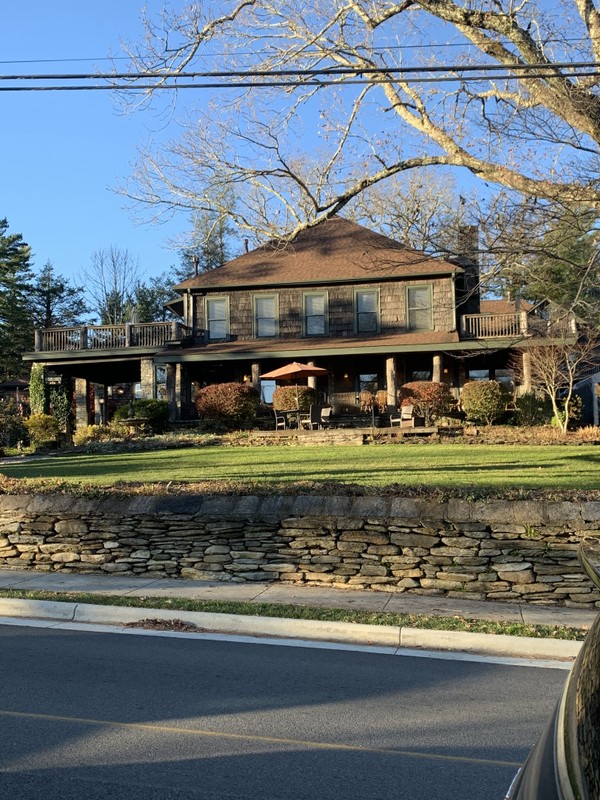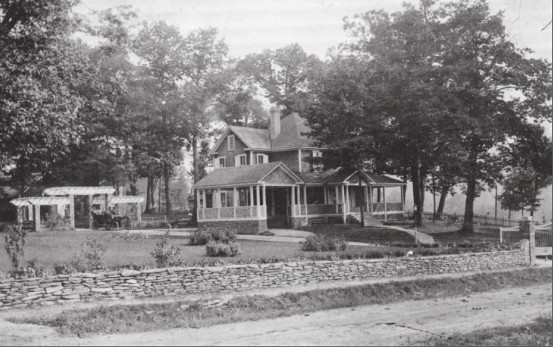Inn at Ragged Gardens
Introduction
Text-to-speech Audio
Images



Washburn House/Inn at Ragged Gardens Image from Blowing Rock Revisited by Trent Margrif, 2015.

Backstory and Context
Text-to-speech Audio
The turn of the twentieth century brought many wealthy families to the North Carolina mountains in search of cooler summer temperatures. A.W. Washburn, of Charlotte, N.C., joined the ranks of the “cottagers” with the completion of his Blowing Rock home in 1900.
The home utilizes chestnut bark for the exterior siding. This use of bark was made popular by architect Henry Bacon who, in the late 1800s, designed several cottages and community buildings in Linville, N.C. utilizing chestnut bark siding. He is best known for his design of the Lincoln Memorial in Washington D.C.
The chestnut blight of the early 1900s devastated the American Chestnut tree. Consequently, the large amount of chestnut paneling and trim work used on the interior of the Inn is a key feature of the home. The paneling on the first floor, the double doors leading into the reading room and the paneling of the room itself are all made of chestnut.[1] Grandfather Mountain granite is also used throughout the home. [2].
The original 11-acre estate included a livery stable, servants’ quarters and two other residences as well as riding trails connecting it to the adjacent forest. [3] A cottage used for extra boarding was added in 1927. The exterior of this second building is made of the same chestnut bark as the home. The home is located near the center of town but the use of stone walls and extensive gardens helps keep the property uniquely separated from the storefronts.[4]
Sources
- Frampton, Jane, and John Frampton, eds. "American Chestnut Legacies." Chestnut Mast 7 (2005): 6.
- "Blowing Rock Historical Markers." Blowing Rock Art & History Museum : Home. Accessed September 25, 2018. http://blowingrockmuseum.org/see-do/blowing-rock-historical-marker-program.html.
- Inn at Ragged Gardens, 1988. Box 8. Folder 14. AC 112: W.L. Eury Appalachian Collection. Appalachian State University. Boone, North Carolina, USA.; Margrif, Trent. Blowing Rock Revisited. Charleston, SC: Arcadia Publishing, 2015.
- Margrif, Trent. Blowing Rock Revisited. Charleston, SC: Arcadia Publishing, 2015.
- "Welcome to The Inn At Ragged Gardens." The Inn At Ragged Gardens | Lodging Blowing Rock NC. Accessed September 25, 2018. http://www.ragged-gardens.com/.
